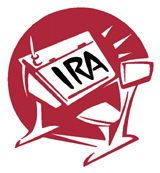 IRAs
Make Dollars and Sense
IRAs
Make Dollars and Sense
Make those golden years more golden with careful retirement planning.
Whether retirement days are around the corner or well over the horizon,
it's important to plan ahead. For many, setting up an individual retirement
arrangement (IRA) can provide that extra peace of mind.
IRAs are savings plans that give individuals tax benefits as an incentive
to set aside money until retirement. Contributions to a traditional IRA
may be deductible and the earnings on the account are not taxed until withdrawn.
Although withdrawals are generally taxable, retirees may pay a lower tax
rate than when they were working.
Anyone who has taxable compensation - such as wages, tips, commissions
or taxable alimony - and who will be under age 70 1/2 at the end of the
year, can set up a traditional IRA. Money can be put into an IRA any time
during the year or by the due date of the tax return for that year, not
including extensions.
Annual IRA contributions are limited to the lesser of $2,000 or the
person's compensation, but if only one spouse has compensation, contributions
may still be made to an IRA for the other spouse. If neither spouse is
covered by an employer retirement plan, the contributions to a traditional
IRA are deductible on their tax return. If either spouse is covered by
an employer's plan, the deductibility of IRA contributions depends on their
joint income level.
Generally, individuals cannot make withdrawals before turning age
59 1/2 without being penalized. But new rules allow penalty-free withdrawals
for certain purposes, such as for higher education expenses and up to $10,000
for a first-time home purchase. Other penalty exceptions apply to amounts
used for unreimbursed medical expenses that are more than 7 1/2 percent
of adjusted gross income or for medical insurance for a tax-payer who receives
unemployment compensation for at least 12 consecutive weeks.
Congress added some new IRA provisions beginning in 1998. One is
a new plan called the Roth IRA. The Roth IRA features nondeductible contributions,
with tax-free distributions if they begin after the fifth year the taxpayer
has a Roth IRA (starting with the initial contribution year) and the taxpayer
is at least age 59 1/2, or disabled, or the distribution is a qualified
first-time home buyer distribution (limited to $10,000). If the owner dies,
the beneficiary can receive tax-free distributions if it has been more
than five years since the owner opened the Roth IRA.
Annual contributions to all IRAs - Roth and traditional - are limited
to a total of $2,000 per person. The limit for Roth IRAs is phased out
as adjusted gross income (AGI) increases from $95,000 to $110,000 ($150,000
to $160,000 on a joint return). Unlike the traditional IRA, Roth IRAs allow
people to contribute after they reach age 70 1/2 and don't require withdrawals
while they are living.
People with AGI under $100,000 can convert a non-Roth IRA into a
Roth IRA. They will have to pay tax as though they had withdrawn the funds,
but there is no early withdrawal penalty. If the conversion takes place
in 1998, the taxable amount may be spread over four years. That is, one-quarter
of the taxable conversion is included in income in 1998, 1999 and so on.
Married couples filing separate returns can't convert a non-Roth IRA into
a Roth IRA.
Publication 590, Individual
Retirement Arrangements (IRAs), has information on deductible and
nondeductible contributions, withdrawals, the new rules beginning in 1998
and what actions will result in penalties. Publication
553, Highlights of 1998 Tax Changes, discusses recent tax law.
To order, call 1-800-829-3676 or download here.
 New
IRA for Education
New
IRA for Education
The Taxpayer Relief Act of 1997 created an Education IRA that is
not a retirement savings vehicle, but one used to pay for qualified higher
education expenses of a designated beneficiary.
The Education IRA features nondeductible contributions of up to $500
a year per beneficiary, with no tax on the earnings if withdrawals are
less than qualified higher education expenses in the year of the withdrawal.
The beneficiary must be under 18 when the contribution is made. The $500
limit is reduced (phased out) if a contributor has adjusted gross income
above $95,000 ($150,000 on a joint return).
Withdrawals not used for higher education purposes will be partially
taxable to the beneficiary and will generally be subject to an additional
10 percent penalty. This will also apply to any amount remaining in an
Education IRA when the beneficiary reaches age 30. There is no tax on a
rollover from a beneficiary�s Education IRA to an Education IRA of certain
family members.
Publication 590, Individual
Retirement Arrangements (IRAs), and Publication
970, Tax Benefits for Higher Education, have more information.
To order, call 1-800-829-3676 or download here.
 Kids
Are a Tax Bonus
Kids
Are a Tax Bonus
People starting a family think about many things, like naming their
child, clothing, education and so on. But one thing they might not have
thought about is the tax benefit of having children. Sure, they probably
know about the exemption for a dependent, but this year there's another
tax benefit - the child tax credit.
Depending on their income, people may be able to claim up to a $400
credit on their 1998 tax return for each qualifying child under age 17.
This means they can reduce the tax owed by up to $400 for each child -
not a bad deal! For families with one or two children, the credit is nonrefundable.
In other words, they may use the credit to reduce the tax they owe to zero,
but they would not receive any remainder as a refund. However, if they
have three or more children, a portion of the child tax credit may be refundable.
(The maximum credit will rise to $500 per child in 1999.)
As with many things in life, there are limits that come with the
benefits. The amount of the child tax credit depends on one�s income. The
value of the credit is $400 per qualifying child, but the total credit
is reduced by $50 for each $1,000, or part thereof, that their adjusted
gross income exceeds $110,000 for joint filers, $55,000 for married filing
separately, and $75,000 for single filers.
For more information about the credit, see the
instructions for Form 1040 or Form 1040A.
General Information | 1998 Tax Year Archives | Tax Help Archives | Home
